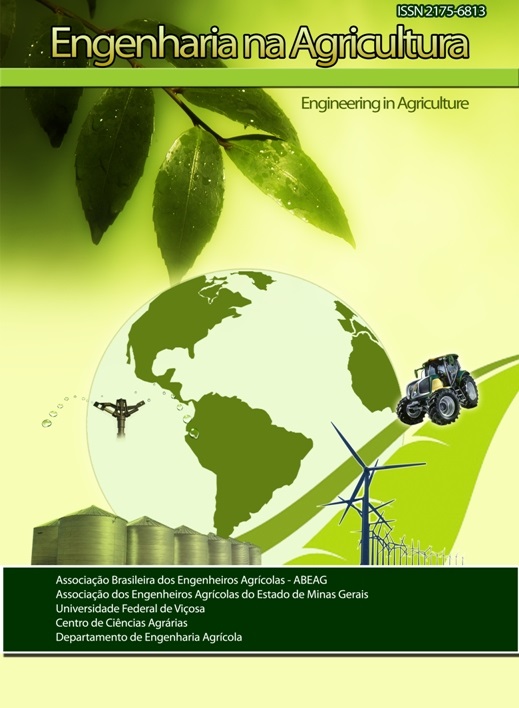DRIPPERS AND DEVICES OF LINE ENDINGS OPERATING WITH WATERS CONTAINING DIFFERENT CONCENTRATIONS OF ORGANIC MATERIAL
DOI:
https://doi.org/10.13083/reveng.v25i2.764Keywords:
Irrigação localizada, Sólidos totais, Uniformidade de aplicaçãoAbstract
This study aimed to evaluate the performance of a dripper and of a self-cleaning valve operating with water containing different concentrations of total solids. The experiment was conducted in sub-subplots design, having on the plots two line endings (conventional and self-cleaning valve), in the subplots five waters with total solids concentrations (7 mg L-1, 407 mg L-1, 1,007 mg L-1, 2,007 mg L-1, 4,007 mg L-1) and on the sub-subplots 60 reviews of irrigation system, on the completely randomized design with three replications. In the end of the trial period, each dripper applied a cumulative volume of 1.44 m³. The parameters evaluated were: flow and the uniformities of water applications through the distribution coefficients (DU), Christiansen (CU) and statistical (US). The performance of drippers tested is not affected by application of water containing total solids concentrations less than 17.7 and 44.8 mg L-1 in irrigation systems equipped with line endings conventional and self-cleaning, respectively. Irrigation systems equipped with self-cleaning line endings provide better performance of drippers when operating with water containing total solids concentrations of the 407 mg L-1.Downloads
Downloads
Published
How to Cite
Issue
Section
License
Authors who publish with this journal agree to the following terms:
The author(s) authorize(s) the publication of the text in the journal;
The author(s) ensure(s) that the contribution is original and unpublished and that it is not in the process of evaluation by another journal;
The journal is not responsible for the views, ideas and concepts presented in articles, and these are the sole responsibility of the author(s);
The publishers reserve the right to make textual adjustments and adapt texts to meet with publication standards.
From submission, the author is fully conceding the paper's patrimonial rights to the publication, but retaining the owner of its moral rights (authorship and paper's identification) according to Creative Commons Attribution-Noncommercial.








 Licensed by
Licensed by 